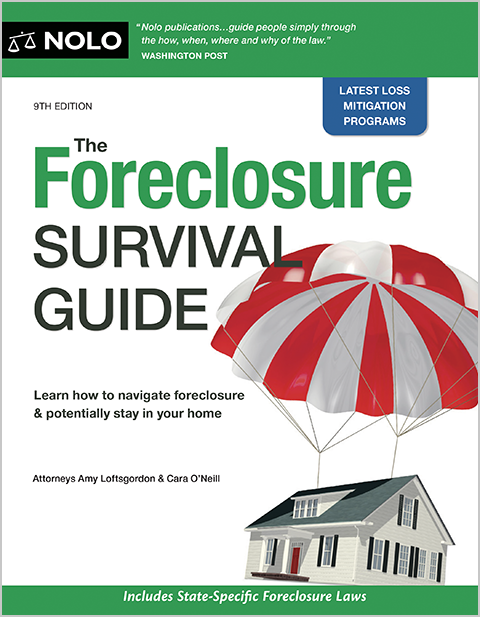Learn the difference between a promissory note vs. a mortgage (or deed of trust).
Most people who take out a loan to buy a home sign two primary documents: a mortgage (or deed of trust) and a promissory note (technically, a "mortgage note"). By signing a note, you promise to repay the borrowed amount, usually with monthly payments. Signing a mortgage allows the lender to get its money back if you don't make those payments through foreclosure.
- What Is a Mortgage?
- What Is a Promissory Note?
- What Are the Key Differences Between a Mortgage and a Promissory Note?
- How Are Mortgages and Promissory Notes Related?
- Can a Mortgage Be Used Without a Promissory Note?
- Can a Promissory Note Be Used Without a Mortgage?
- Documents Lenders Use to Transfer Loans
- What Happens If I Pay Off the Loan in Full?
- Talk to a Lawyer About Mortgage Loans or Foreclosure Issues
What Is a Mortgage?
Homebuyers usually think of a "mortgage" as a loan. But a mortgage is the contract you sign with the lender to provide security (collateral) for a loan. In some states, a deed of trust or another document is used instead of a mortgage. In this article, the terms "mortgage" and deed of trust mean the same thing.
Again, by signing a mortgage, you pledge your home as collateral for the loan. The mortgage gives the lender the right to sell the property through foreclosure and use the proceeds to recoup its money if you fail to make the loan payments.
What Are the Features of a Mortgage?
- A mortgage sets out your responsibilities for taking care of the property, like keeping the home in good shape and maintaining homeowners' insurance.
- The lender records the mortgage in the county land records, creating a lien on the property. The mortgage contains the legal description of the property so that it attaches to that particular property.
- Along with standard covenants between you and the lender, the mortgage contains an "acceleration clause." This clause permits the lender to demand that you repay the loan's entire balance if you default, for example, by not making payments.
- If you don't repay the entire loan amount after acceleration, the mortgage describes when and how the lender may foreclose.
- The mortgage doesn't obligate you to repay the loan. You aren't personally liable for repaying the debt if you sign the mortgage but not the note.
When Is a Mortgage Used?
If you want to buy a home but can't afford to pay the full price, a mortgage is a financial tool that can help you purchase the property. That's because the mortgage secures the debt. Without this security, the lender wouldn't make the loan.
Again, some states use mortgages, while others use deeds of trust or another similar-sounding instrument for securing home loans. In Georgia, for example, the most commonly used contract that gives a lender a security interest in a property is called a "security deed." (In this article, the term "mortgage" covers mortgages, deeds of trust, and other security instruments.)
What Is a Promissory Note?
While people typically refer to a home loan as a "mortgage" or "mortgage loan," the promissory note contains the borrower's promise to repay the loan amount. The note creates the loan obligation.
Mortgage Note vs. Promissory Note
A promissory note is basically an IOU. Signing a note means you're liable for repaying a loan. It is a written promise to repay a specific amount of money and it contains the terms for repayment. The holder of the note is the loan owner.
While all mortgage notes are promissory notes, not all promissory notes are mortgage notes. A mortgage note is a specific type of promissory note. This kind of promissory note is secured by a mortgage, meaning a parcel of real property acts as collateral for the debt. The mortgage note ties the loan to the real estate. So, the lender has the right to foreclose if the borrower defaults.
What's In a Promissory Note?
The formats of mortgage notes vary among lenders, but notes tend to have the same basic information, including:
- the amount of the mortgage loan.
- the interest rate
- monthly payments required
- fees for late payments, and
- whether there is a prepayment penalty.
What Are the Features of a Mortgage Note?
- The note includes the loan terms, as described above, like the interest rate (fixed or adjustable), the late charge amount, the amount of the loan, and the term (number of years).
- A note isn't recorded in the county land records. The lender holds on to the note.
- The note gives the lender the right to collect on the loan if you don't make payments.
- When the borrower pays off the loan, the note is marked as "paid in full" and returned to the borrower.
- Only those who sign the note are legally responsible for repaying the lender.
When Is a Mortgage Note Used?
In the context of a home purchase, a note is used to create the borrower's written promise or commitment to repay the sum of money borrowed to buy the property, typically with a specific interest rate and according to a predetermined repayment schedule.
A note is a crucial component of getting a home loan. A borrower usually must sign a note along with the mortgage. The note gives legal protections to the lender if the borrower defaults on the debt and provides clarification to the borrower so that they understand their repayment obligations.
What Are the Key Differences Between a Mortgage and a Promissory Note?
The key differences between a mortgage and a mortgage note can be summarized as follows:
- The purpose of the document. A mortgage creates a security interest in the property (a lien) for the lender, while the note serves as the borrower's written promise to repay the debt.
- The contents of the document. The mortgage describes what happens to the home if the borrower doesn't make the payments, the lender's rights regarding the home, and the borrower's responsibilities for the property. The note describes the loan terms, including the interest rate and repayment schedule.
- The legal implications. The mortgage gives the lender the right to foreclose if the borrower defaults, whereas the note creates a personal obligation for the borrower to pay the debt. So, the lender could pursue legal action to recover the debt by suing the borrower personally on the note or getting a deficiency judgment after foreclosure if state law allows it.
How Are Mortgages and Promissory Notes Related?
A mortgage and note are used in tandem when a person takes out a loan to buy real estate. These documents create a legally binding financial arrangement between a borrower and a lender and work together to ensure the lender gets paid back if the borrower defaults on the debt.
Can a Mortgage Be Used Without a Promissory Note?
If you take out a home loan and are on the property's deed, you'll likely have to sign the mortgage. But even if the lender requires you to sign the mortgage, you might not have to sign the note.
For example, say you're not eligible for a home loan at a good interest rate because your credit scores are terrible. Your spouse, however, has excellent credit and easily qualifies for a loan. The lender agrees to lend to your spouse and doesn't include you as a borrower on the note. But because you're both on the home's deed, the lender requires you both to sign the mortgage.
Your spouse is legally responsible for repaying the loan, but you've both given the lender permission to foreclose if that doesn't happen. In the case of a foreclosure, depending on state law and the circumstances, the lender might be able to get a deficiency judgment against your spouse but not you.
Can a Promissory Note Be Used Without a Mortgage?
Promissory notes are often used for unsecured loans. An unsecured loan isn't backed by collateral, such as real estate. For example, you might use a promissory note if you make an unsecured personal loan to a friend or family member.
Again, all mortgage notes are promissory notes, but not all promissory notes are mortgage notes.
Documents Lenders Use to Transfer Loans
Banks and mortgage companies often sell and buy home loans from each other. The documents a lender uses when selling a home loan are called "assignments" and "endorsements."
What Is a Mortgage Assignment?
An "assignment" transfers the mortgage from one lender to another. Like a mortgage, the lender records an assignment in the county land records.
Generally, each assignment must be recorded. However, in some cases, the mortgage (or a later assignment) designates Mortgage Electronic Registration System, Inc. (MERS) as a nominee for the lender. In that situation, MERS tracks the loan transfers in its computerized system, eliminating the need for separate assignments when the loan is transferred.
How Note Endorsements Work
When a loan changes hands, the note is endorsed (signed over) to the loan's new owner. Sometimes, the note is endorsed in blank, making it a bearer instrument under Article 3 of the Uniform Commercial Code. Whoever holds the note has the legal authority to enforce it and has standing to foreclose.
What Happens If I Pay Off the Loan in Full?
If and when the loan is fully repaid, the lender will record a release (or satisfaction) of mortgage or a reconveyance of deed (used in conjunction with deeds of trust) in the county land records. This document removes the mortgage lien from the property. The note is marked "paid in full" and returned to the borrower.
Talk to a Lawyer About Mortgage Loans or Foreclosure Issues
If you're taking out a home loan and need help understanding the terms and conditions, consider talking to a real estate attorney before you sign the documents. Consider talking to a foreclosure attorney if you're worried about a possible foreclosure.
- What Is a Mortgage?
- What Is a Promissory Note?
- What Are the Key Differences Between a Mortgage and a Promissory Note?
- How Are Mortgages and Promissory Notes Related?
- Can a Mortgage Be Used Without a Promissory Note?
- Can a Promissory Note Be Used Without a Mortgage?
- Documents Lenders Use to Transfer Loans
- What Happens If I Pay Off the Loan in Full?
- Talk to a Lawyer About Mortgage Loans or Foreclosure Issues

